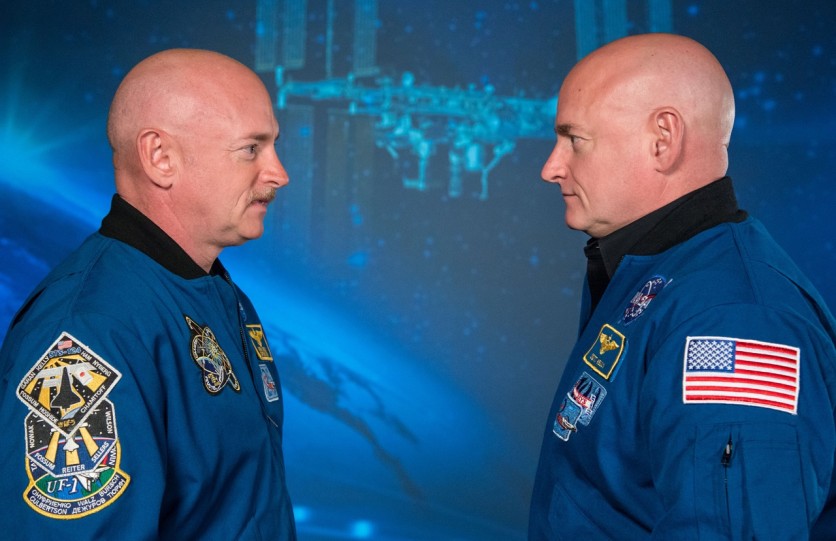National Astronaut Day comes right after "Star Wars" day, and it cannot be even more fitting. These real-life space crusaders are among the coolest and smartest people to ever live, and May 5th is in celebration of their massive contributions to science and the overall advancement of human society.

But what is Astronaut Day, really, and why do we need to keep celebrating it every year?
Origins Of National Astronaut Day
According to National Today, the celebration started back in 2016 courtesy of the Uniphi Space Agency. Now, you might have not heard of Uniphi, but many astronauts have definitely heard of them. That's because its parent company, Uniphi Good LLC, is a company who represents over 20 former astronauts for NASA.
By establishing the National Astronaut Day, Uniphi aims to celebrate astronauts as heroes in their own right - people who risk life and limb to help humanity reach out and know more about the last frontier. Aside from that, the celebration also aims to help former astronauts share their experiences to a wider audience. This, in turn, will help inspire future generations to follow their dreams and reach for the stars.
Great Reasons Why Astronauts Are So COOL
There's a good reason why the job title "astronaut" holds a ton of prestige - and why so many children want to be one when they grow up. The job itself is just an absolutely exhilarating thing to imagine: being in outer space, performing scientific experiments to advance humankind, no big deal.
But the fact that they work in outer space (and perhaps soon, the Moon, Mars, or any other planets) is not the only thing that makes them as cool as can be. Here are other facts about these space explorers that you might have never known ever.
Astronauts Are REAL Time Travelers
Now, you might think "no, time travel is impossible." Not only is that theoretically untrue, but astronauts (specifically the ones on the ISS) are actually the first real-life time travelers. And this is possible via the basic laws of physics. So yes, time travel is possible - even if only under certain conditions - and we'll explain why.
Albert Einstein's Theory of Relativity spoke of a concept called time dilation. The simplest explanation is as follows: the faster you move, the slower time passes for you. And this is already exhibited by the experience of former NASA astronaut Scott Kelly, who actually aged slower than his twin brother Mark on Earth, writes ScienceAlert.

Time passed slower for Kelly while he was on the ISS, which circumnavigates the Earth in merely 90 minutes at speeds of up to 17,500 miles an hour. Granted, he only aged 5 milliseconds slower than his twin brother, but Scott still aged slower - meaning that the speed of the ISS made him travel to a future 5 milliseconds from his brother's time.
They Grow Taller While They're In Space
Due to spending weeks - even years - in microgravity, astronauts are not subject to the gravitational pull of Earth pulling them down. That gravity causes your spine to be squished.
But in space, there's no gravity. Therefore, this allows astronauts' spines to decompress, allowing them to grow a few centimeters at the very least while out there. But as per National Geographic, their heights return to normal after they go back to Earth; to gravity's loving embrace.
The Food They Eat Is More Expensive Than You Think
In space, there's not a lot of provisions for cooking. Not to mention, delivering food to the International Space Station is not as simple as sending an UberEats driver to them.
According to ICSID, NASA spends around $2,000 for food per person when it comes to feeding astronauts in space. But that price can go up even more if you consider private companies who also conduct their own crewed missions, like SpaceX, Blue Origin, or Virgin Galactic. Aside from that, the cost of sending just a single pound of food into Earth's orbit costs an astronomical $10,000 (pun totally intended).

Their Social Media Photos Are Second To None
The Atlantic wrote a feature about how astronauts basically have the coolest, one-of-a-kind social media photos and videos around. They are, after all, the only ones who aren't living on Earth at any given moment. As such, the photos and videos they take of the cosmos and our planet from above are some of the most amazing ones you'll ever see.
Just take a look at this selfie from astronaut Rick Mastracchio, which was taken during his spacewalk:
An 'EVA Selfie' of me. Notice the Earth reflected in my visor. pic.twitter.com/ABjOWakyzF
— Rick Mastracchio (@AstroRM) April 25, 2014
Not everyone gets to see the freaking Earth reflected in their sunglasses any day, right? And this man is just doing some work out there in space like it's no big deal.
Celebrate National Astronaut Day!
It is only fitting that National Astronaut Day comes after "Star Wars" Day. Combined, these two celebrations basically honor humanity's never-ending desire to explore the cosmos and see what really is out there - wonders never yet seen or heard, all ready for only the boldest of souls to reach.
Related Article : NASA Astronaut Hopefuls, Here's What You Have To Do (Or Be) To Get In
This article is owned by Tech Times
Written by RJ Pierce
ⓒ 2025 TECHTIMES.com All rights reserved. Do not reproduce without permission.




